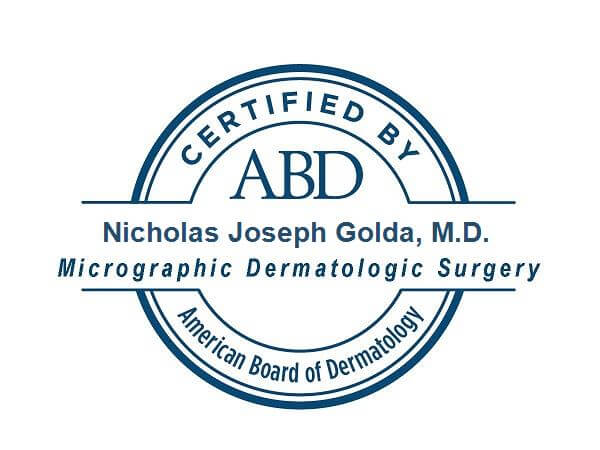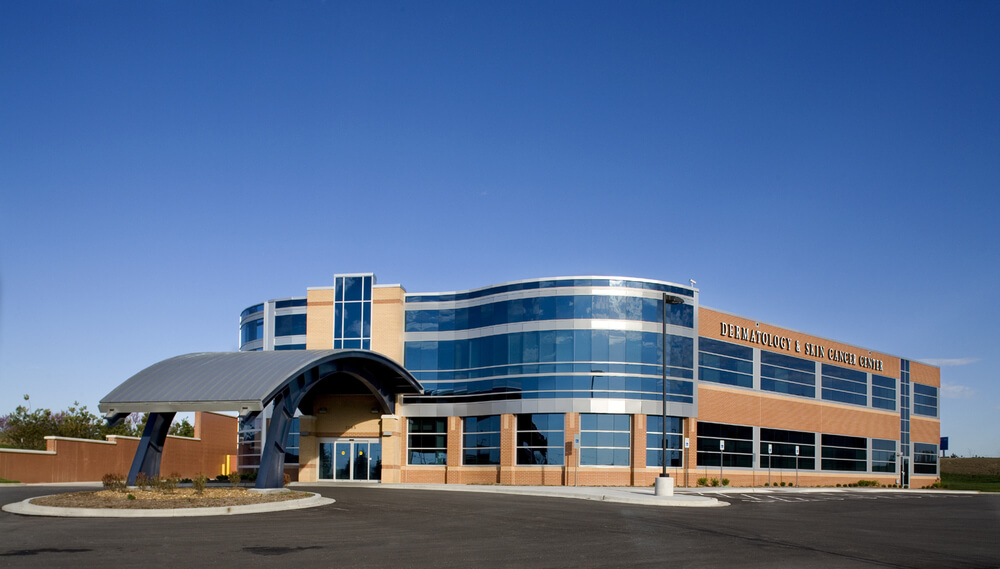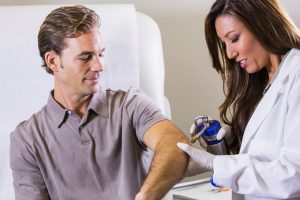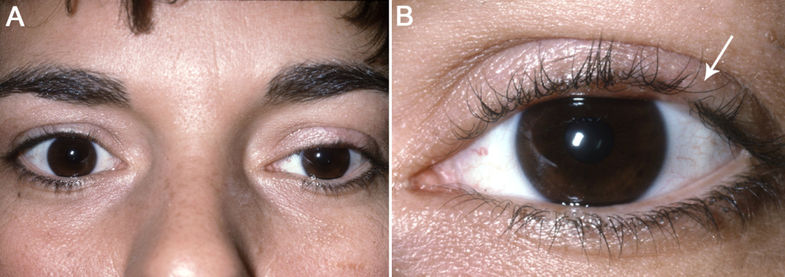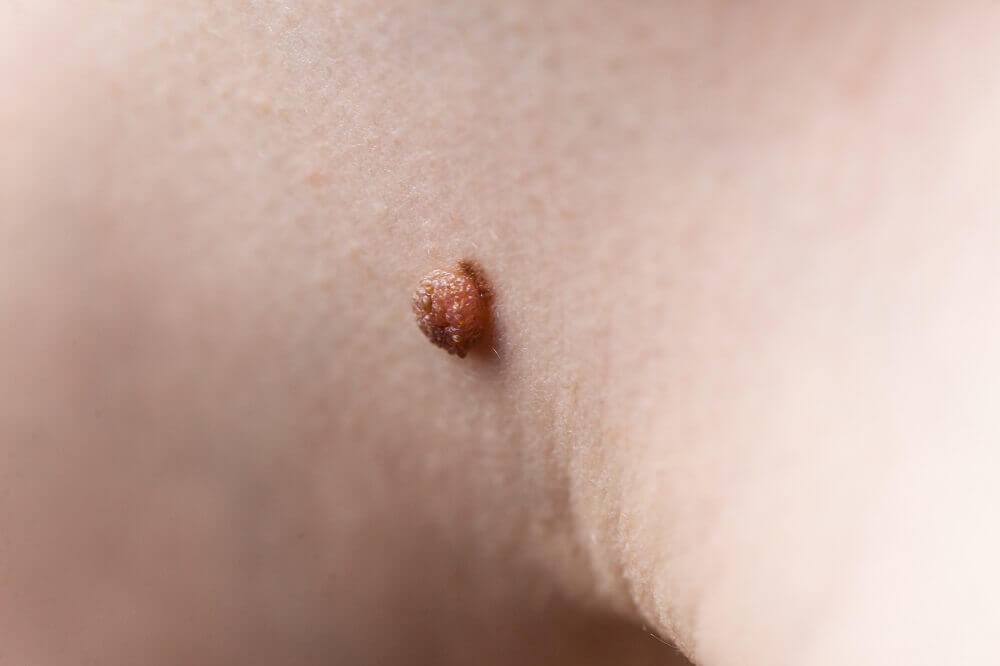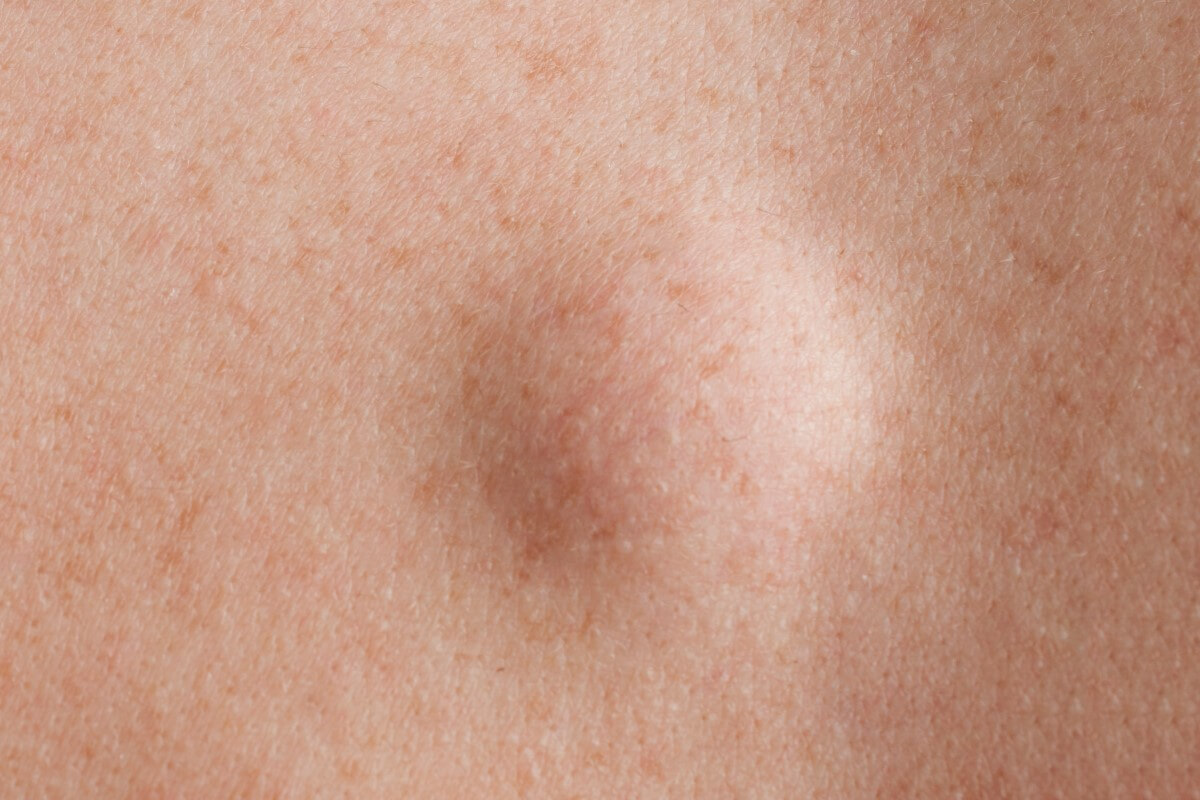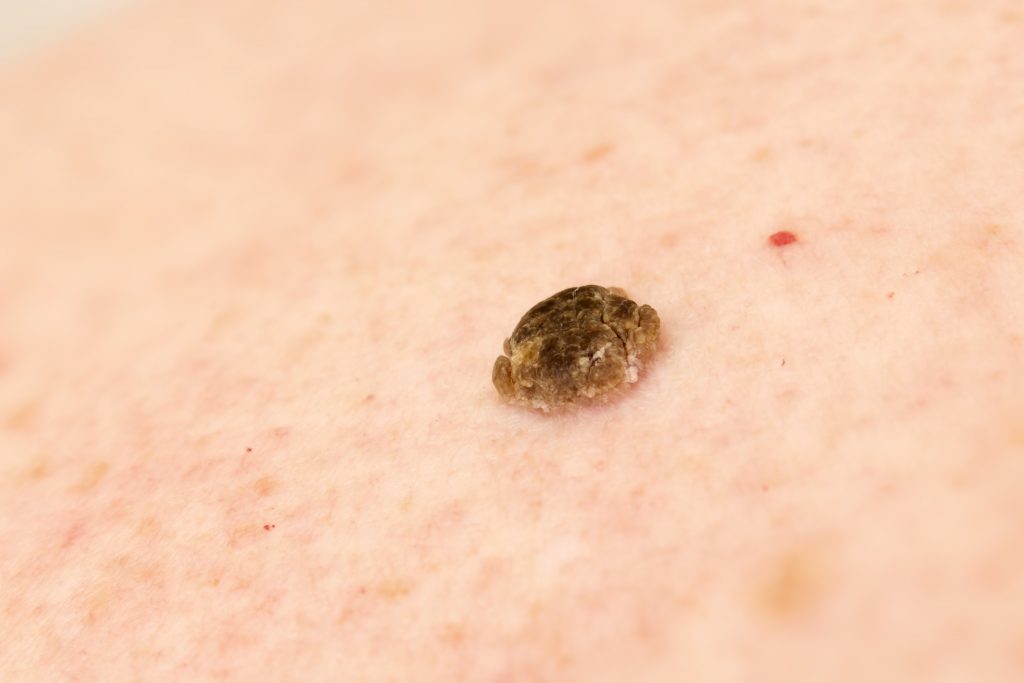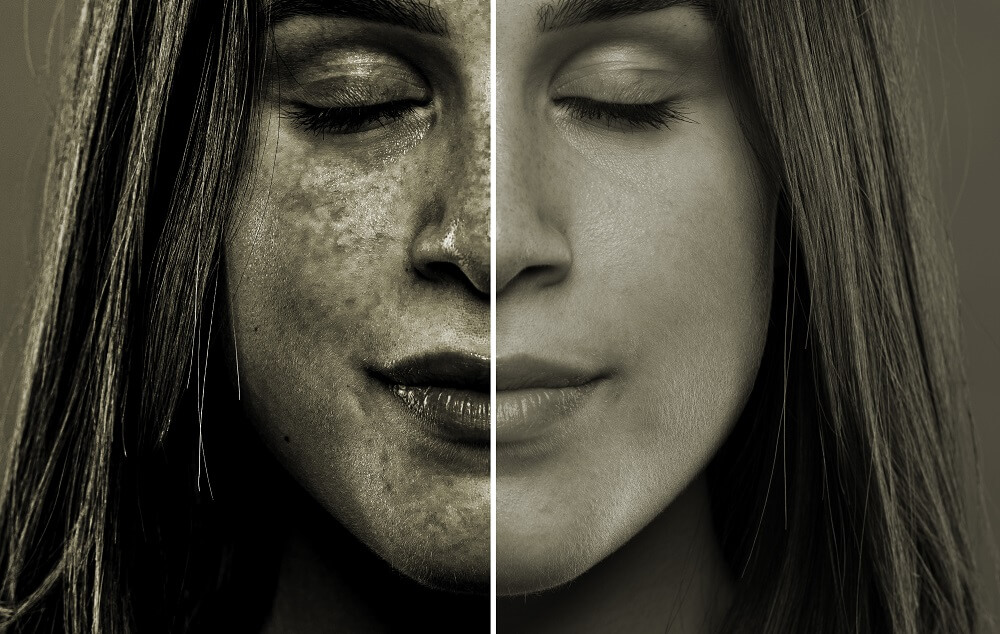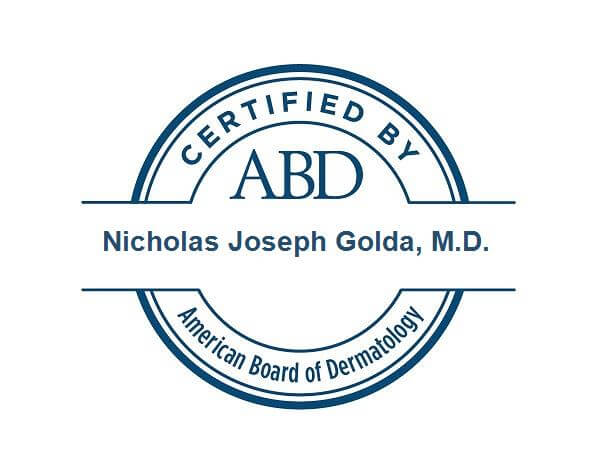
Nicholas Golda, MD, FAAD, FACMS
Board-Certified Dermatologist
Board-Certified Micrographic Dermatologic Surgeon
Fellowship-Trained Mohs Surgeon
Fellow of the American Academy of Dermatology
Dr. Nicholas Golda is double board-certified in dermatology and micrographic dermatologic surgery. He earned his medical degree from the University of Southern California Keck School of Medicine in 2005 where he graduated with highest honors and as a member of the Alpha Omega Alpha Medical Honor Society. After completing an internship in internal medicine, he was trained in dermatology at the University of Missouri Department of Dermatology. Following dermatology residency, he completed an American College of Mohs Surgery (ACMS) fellowship in Mohs Micrographic Surgery under the direction of Dr. George Hruza. He is trained in general dermatology, dermatologic surgery, advanced facial reconstruction, and laser surgery.
Dr. Golda spent 12 years on faculty at the University of Missouri Department of Dermatology achieving promotion to Professor of Dermatology. There, he developed a national and international reputation as the director of a widely sought-after fellowship training program in Micrographic Surgery and Dermatologic Oncology where dermatologists would come from across the nation and internationally to spend a year training with him. He has published over 60 peer-reviewed manuscripts in several dermatologic and oncologic journals, has written 5 dermatology and dermatologic surgery textbook chapters, and is invited to speak at the leading dermatologic surgery meetings in the United States each year. His patients and fellow physicians have acknowledged the quality of his work by recognizing him in St. Louis Magazine’s Best Doctors, the Best Doctors in America, the Columbia Tribune Readers’ Choice Award, and Inside Columbia Magazine’s Columbia’s Favorite Doctors.
Dr. Golda is currently a member of the American Academy of Dermatology, the American College of Mohs Surgery, the American Society for Dermatologic Surgery, and the American Dermatological Association. He currently serves on the Board of Directors for the American College of Mohs Surgery.
Dr. Nicholas Golda specializes in skin cancer and Mohs micrographic surgery at U.S. Dermatology Partners Lee’s Summit in Lees Summit, Missouri.
Specialties and Affiliations
- American Academy of Dermatology
- American College of Mohs Surgery
- American Society for Dermatologic Surgery
- American Dermatological Association
Featured Articles
- Hands-On BCC Approach
- Primer: Mustarde Cervicofacial Flaps
- Nasal Function and Appearance Post Flap Repair: NAFEQ Study
- Nicholas Golda, MD Shares Pearls to Manage Bleeding in Mohs Surgery
- Bupivacaine to Reduce Pain and Narcotic Use After Mohs Micrographic Surgery
- Mohs Micrographic Surgery
Featured Blogs
Clinic Locations
U.S. Dermatology Partners Lee's Summit
3265 NE Ralph Powell Rd.
Lee's Summit, MO 64064
(816)-454-3424
Insurance Plans Accepted By Nicholas Golda, MD
- Aetna
- Americas Choice Provider Network (ACPN)
- Anthem
- Blue Cross Blue Shield (BCBS)
- Cigna
- First Health
- Health Net Federal Services (HNFS)
- Health Smart
- HealthChoice
- Humana
- Independent Medical Systems (IMS)
- Medicare
- Multiplan
- Optum Accountable Care
- Private Healthcare Systems (PHCS)
- Railroad Medicare
- Three Rivers Provider Network (TRPN)
- Tricare
- TriWest Healthcare Alliance (TriWest)
- United Healthcare (UHC)
- WPPA ProviDRs Care
Nicholas Golda, MD accepts most major insurance plans. If your plan is not listed above, please contact the office to verify coverage.
What Our Patients Say
Source : Healthgrades – Apr 03, 2024
Source : Healthgrades – Mar 31, 2024
Source : Healthgrades – Mar 29, 2024


